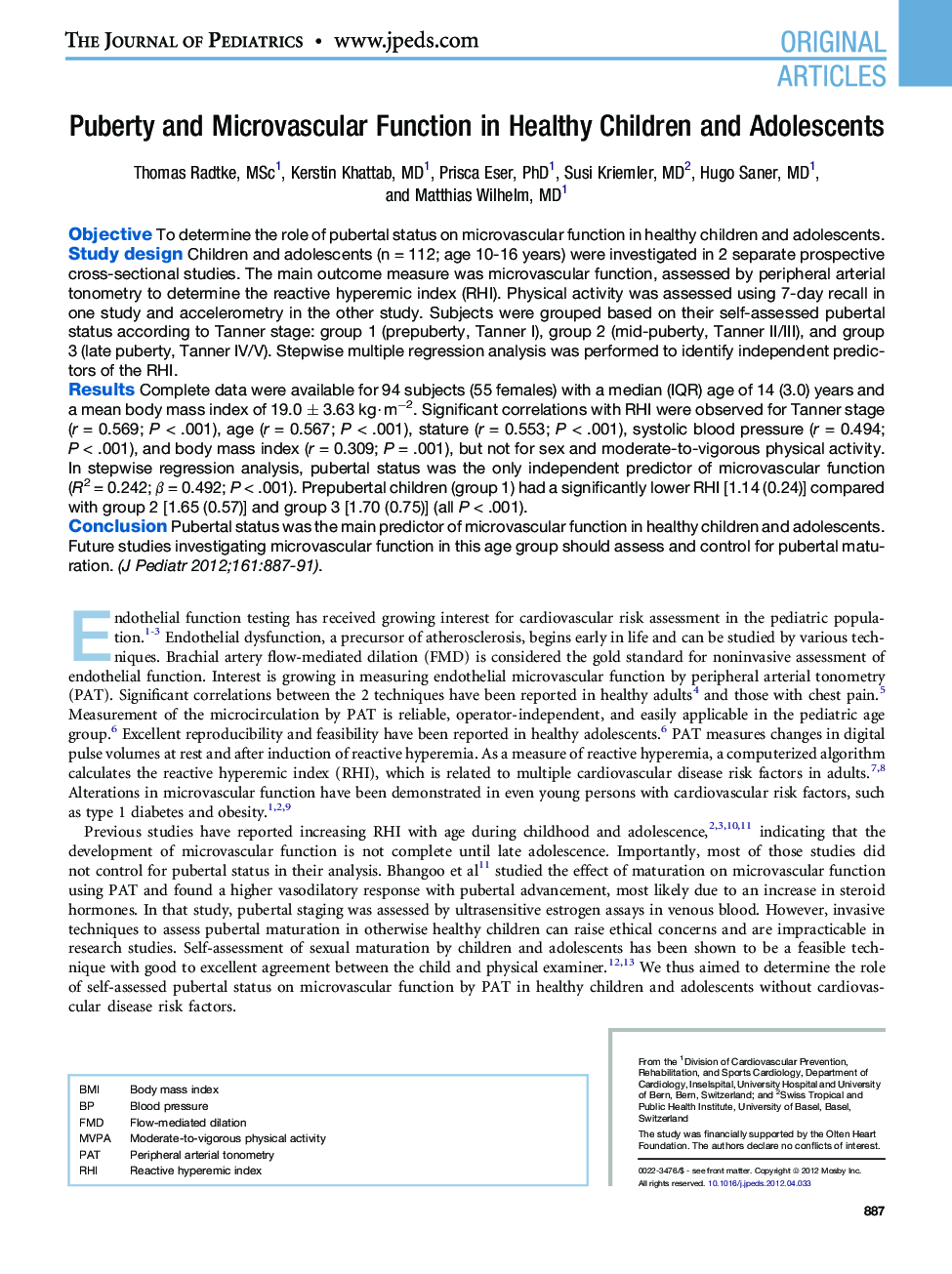| Article ID | Journal | Published Year | Pages | File Type |
|---|---|---|---|---|
| 6224728 | The Journal of Pediatrics | 2012 | 6 Pages |
ObjectiveTo determine the role of pubertal status on microvascular function in healthy children and adolescents.Study designChildren and adolescents (n = 112; age 10-16 years) were investigated in 2 separate prospective cross-sectional studies. The main outcome measure was microvascular function, assessed by peripheral arterial tonometry to determine the reactive hyperemic index (RHI). Physical activity was assessed using 7-day recall in one study and accelerometry in the other study. Subjects were grouped based on their self-assessed pubertal status according to Tanner stage: group 1 (prepuberty, Tanner I), group 2 (mid-puberty, Tanner II/III), and group 3 (late puberty, Tanner IV/V). Stepwise multiple regression analysis was performed to identify independent predictors of the RHI.ResultsComplete data were available for 94 subjects (55 females) with a median (IQR) age of 14 (3.0) years and a mean body mass index of 19.0 ± 3.63 kg·mâ2. Significant correlations with RHI were observed for Tanner stage (r = 0.569; P < .001), age (r = 0.567; P < .001), stature (r = 0.553; P < .001), systolic blood pressure (r = 0.494; P < .001), and body mass index (r = 0.309; P = .001), but not for sex and moderate-to-vigorous physical activity. In stepwise regression analysis, pubertal status was the only independent predictor of microvascular function (R2 = 0.242; β = 0.492; P < .001). Prepubertal children (group 1) had a significantly lower RHI [1.14 (0.24)] compared with group 2 [1.65 (0.57)] and group 3 [1.70 (0.75)] (all P < .001).ConclusionPubertal status was the main predictor of microvascular function in healthy children and adolescents. Future studies investigating microvascular function in this age group should assess and control for pubertal maturation.
